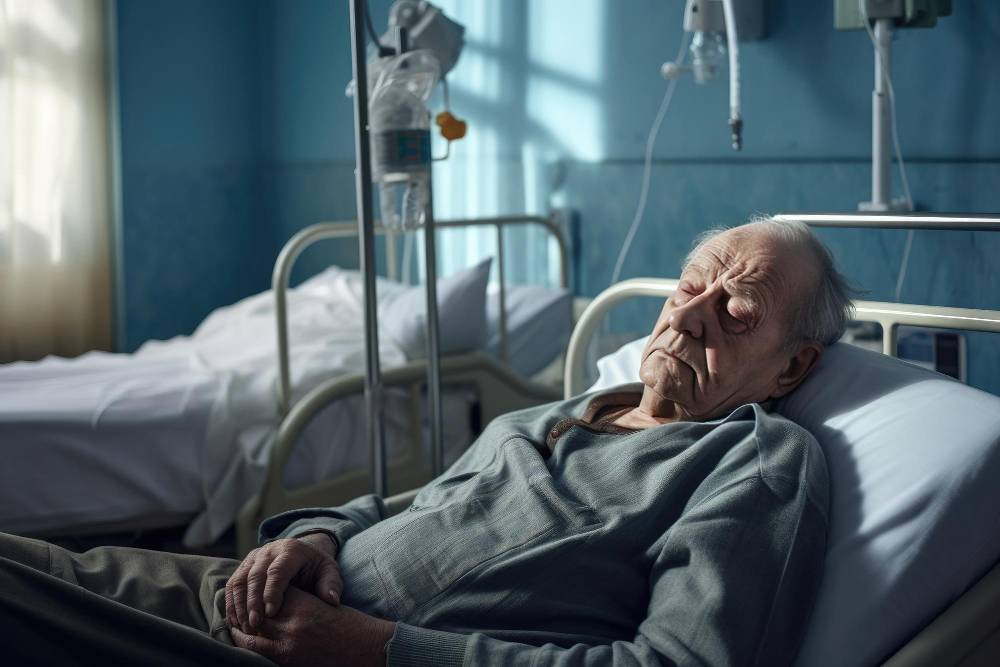Acute stroke is a medical emergency. For patients with an ischemic stroke, treatment with thrombolytic therapy or endovascular intervention is highly time-dependent. The majority (85%) of strokes are ischemic (cerebral infarction), while 15% present with intracranial hemorrhage, and it’s not possible to distinguish between them in prehospital conditions. To differentiate between an ischemic stroke and intracerebral hemorrhage, an emergency CT scan of the brain is required. Therefore, these patients should be transported as quickly as possible to the appropriate hospital when a stroke is suspected.
Signs and symptoms of a stroke most commonly involve focal neurological deficits:
- Numbness
- Weakness or paralysis
- Incomprehensible speech
- Blurred vision
- Confusion
- Severe headache
The most sensitive features associated with the diagnosis of a stroke in prehospital settings are facial weakness, arm weakness, leg weakness, and speech disturbance.
Transient Ischemic Attack (TIA)
A transient ischemic attack (TIA) is defined as a transient episode of neurological dysfunction with focal brain, spinal cord, or retinal ischemia but without an acute infarction of the brain, spinal cord, or retina. TIAs were once defined as transient neurological deficits that resolved within 24 hours. However, we now understand that a transient deficit, i.e., ischemia causing it, can only be discussed if there is no permanent biological damage to the nervous system. If permanent neurological damage (infarction) occurs within the shortest time, it is referred to as a stroke.
Symptoms of TIAs usually disappear within a few minutes or, at most, a few hours, so any person with persistent neurological signs should be assumed to have had a stroke upon initial assessment.
Patients with TIAs have a high risk of developing a stroke, and their symptoms should always be taken seriously. A TIA occurs when the blood supply to a part of the brain is temporarily interrupted.
Differential diagnoses should consider migraine with aura, syncope, epileptic seizure, peripheral vestibulopathies causing transient episodes of dizziness, peripheral nerve disorders that can cause transient paresthesias or numbness with pressure or positioning, metabolic disturbances (hypoglycemia, liver, kidney, or respiratory failure), transient global amnesia, and drug-induced disorders.
ASSESSMENT
- Ensure scene safety and apply personal protective measures.
- Notify Tier medical team responders if necessary.
- Assess ABCDE (airway, breathing, and circulation; there may be airway and breathing problems).
- Oxygen – target saturation >94%.
- Measure blood pressure as a baseline for hospital evaluation.
- The level of consciousness may vary, and the Glasgow Coma Scale (GCS) on the unaffected side should be used for assessment. If speech is severely affected, then it’s easier to assess eye and motor responses.
- Measure blood glucose levels because hypoglycemia can mimic a stroke.
- Assess the exact time of stroke onset (thrombolysis can be administered in the hospital up to 4.5 hours from symptom onset, and endovascular thrombectomy can be done within 24 hours of symptom onset).
- Since patients often have speech disorders or altered mental status, data should be obtained through heteroanamnesis (information from others).
Evaluate if there are time-critical features, which may include:
- Any significant issues with ABC.
- Positive FAST test (Face Arm Speech Test, Table 1).
- Disturbance of consciousness.
If any of these features are present, start managing ABC on the scene, then transport the patient to the nearest appropriate hospital. Depending on local protocols, it may sometimes be possible to transport the patient directly to a hospital with specialized stroke units. This may require that the patient meets specific criteria from the FAST test and falls within the time window for thrombolysis or endovascular intervention.
Whenever possible, ask someone present to accompany the patient to the hospital.
It is important to know that thrombolysis is not the only treatment that has been proven to be beneficial for stroke patients. Admission to a stroke unit for early specialized care saves lives and reduces disability, even if thrombolysis is not indicated.
SUMMARY
- Time is critical when suspecting an acute stroke.
- Strokes can be common and may be caused by ischemia or bleeding; the precise diagnosis is made only after a CT scan.
- The most sensitive signs associated with a stroke diagnosis in prehospital settings are facial weakness, arm weakness, leg weakness, and speech disturbance (FAST test).
- Hypoglycemia can mimic a stroke.
- Hypertension should only be treated if there is an indication.
- The FAST test should be performed on ALL patients with suspected stroke or TIA.
- Patients with TIAs may have a high risk of a stroke and should be taken to the hospital for further evaluation.



0 Comments